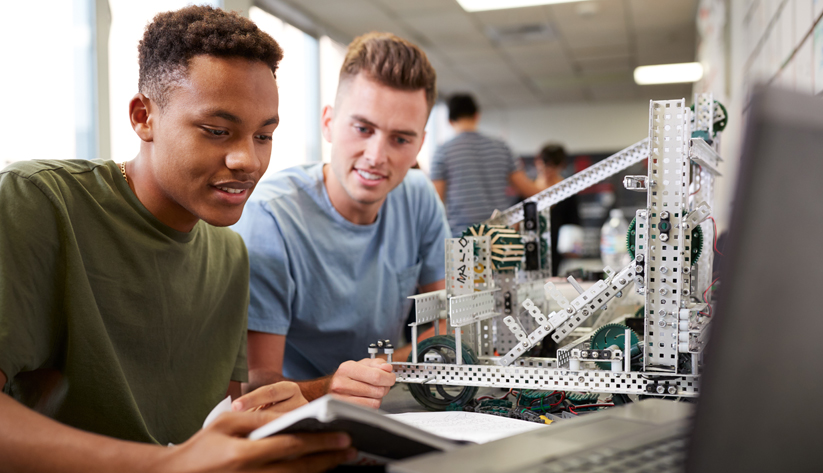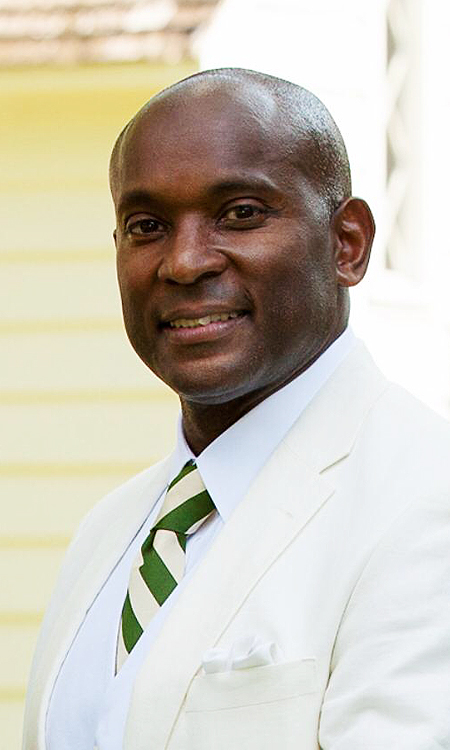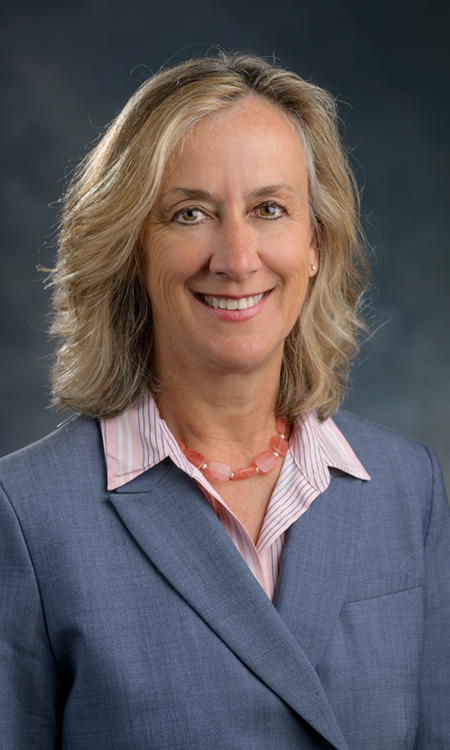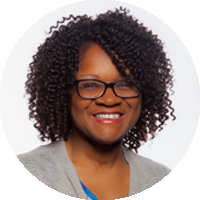
When Shaw Industries joined a program to employ vulnerable high school students, it tapped into a new source of workers.
The Georgia flooring manufacturer became a participant in the Great Promise Partnership, a nonprofit program that places students identified as at risk of not graduating in jobs to get work experience while attending high school. The program is open to students from low-income families who are at least 16, and they divide their day between attending classes and working on the job. Students in the program keep their jobs—for which they are paid—only if they go to class and stay in school.
Shaw began employing students in 2015, and “it’s been a win for everybody,” said Brian Cooksey, the company’s workforce development director. “Every student that’s come to us has graduated from high school, and we’ve also been able to turn the vast majority of these students into full-time associates,” he said. Currently, the company employs about 20 high-schoolers at six Shaw facilities.
The partnership is one of a number of programs designed to support young people from low- and moderate-income backgrounds by providing job readiness training and exposure to varied career pathways. As many businesses face talent shortfalls and attention focuses on the need to address workforce inequities that the COVID-19 pandemic laid bare, the value of programs that help people from underprivileged backgrounds build productive and successful careers is becoming apparent.

The Atlanta Fed’s Stuart Andreason. Photo by David Fine
“Programs that show young adults what the future could hold can make a difference over someone’s lifetime,” said Stuart Andreason, an assistant vice president at the Federal Reserve Bank of Atlanta who directs the Center for Workforce and Economic Opportunity, which examines labor issues that affect low- and moderate-income communities. “We need to let people know that the whole world is available.”
Best to boost early
Given the daunting economic hardships and attitudinal barriers those from underprivileged backgrounds can face, capturing the attention of youngsters, especially those in marginalized groups, at an early age can improve their career trajectory.
One proposed initiative, the College and Career Pathway Lab, would connect intervention programs already operating at New York University (NYU) and Drexel University in Philadelphia. This partnership would increase access to training and career opportunities for middle schoolers, high school students, and those pursuing postgraduate education. The venture would provide mentoring and networking support through high school and college to help students prepare for more demanding graduate and professional degree pursuits in medicine, law, technology, and other fields.
The partnership would incorporate an NYU program that assists low-income students of color attending the city’s public schools and a project for aspiring medical students at Drexel. The College & Career Lab, a year-round NYU program, works with students starting in eighth grade, providing opportunities to take college classes with faculty, explore careers and majors, and meet NYU alumni who serve as mentors and role models. The Drexel Pathway to Medical School prepares students who have completed pre-med coursework for the university’s medical doctor program.
Rufus Jones, a former senior equity trader who cofounded the James Weldon Johnson Foundation, which seeks to advance the legacy of the civil rights activist, came up with the idea to set up the NYU-Drexel partnership and seek to reproduce it in other U.S. cities to provide networking and other resources to help underserved youth overcome systemic barriers to career advancement. Jones cited the importance of establishing years-long ties to stay engaged with students from traditionally excluded populations, who typically face life obstacles that can stymie their educational and career prospects.

Rufus Jones. Photo courtesy of the James Weldon Johnson Foundation
“There’s an existing infrastructure that we are leveraging, there is data to show that [these interventions] have positive consequences for graduation,” Jones said.
Leon McCrea, an associate professor who directs the Drexel med school preparatory program, said the postbaccalaureate training the College and Career Pathway Lab would provide historically underrepresented students could help address the shortage of professionals of color in STEM fields and concerns tied to health equity. “We are coming together to produce something groundbreaking with greater magnitude,” McCrea said.
The proposed College and Career Pathway Lab would collect data on student academic achievement and other measures to assess the program’s effects. “Our partnership that helps to build college and career pathways continuously from middle school through professional school and career is unique,” said Charlton McIlwain, vice provost for faculty engagement and development who cofounded the NYU program. “We are even more unique in our capability to take a data-driven, longitudinal approach to evaluating and measuring the causal impact our work has on students from middle school on through their career,” he added.
Feeding the PhD pipeline
To address the dearth of minorities with advanced degrees, some colleges are implementing innovative programs to encourage students from diverse backgrounds to pursue PhDs. Georgia State University has sought ways to help its students make good career choices and as a result has one of the most diverse student bodies of any college or university in the country.
In 2018, the university launched the Center for the Advancement of Students and Alumni to identify undergraduates who demonstrate potential to pursue postgraduate education and provide them with advice, mentoring, and other assistance in applying for such programs.
“In many disciplines, there are relatively few PhD candidates of color who are in the job market,” said Sally Wallace, an economics professor who is dean of Georgia State’s Andrew Young School of Policy Studies. “To diversify the professoriate, we need to start by diversifying the pool of students who pursue graduate degrees. We are trying to help grow that pipeline.”

Sally Wallace. Photo courtesy of the Andrew Young School of Public Policy
A complementary initiative in the Andrew Young School pairs promising undergraduate students with graduate students in economics, criminal justice, and public management and policy, Wallace said. Mentoring relationships develop as the graduate students give advice on preparatory classes and other topics to encourage the undergraduates to pursue an advanced degree. Of the roughly three dozen undergraduate students who have participated in the project in the past three years, 25 percent opted to attend graduate school, Wallace said.
Georgia State helps students in other ways by, for example, encouraging faculty to use free and lower-cost educational resources to reduce the amount of money students must spend on books and providing summer grants, Wallace said.
Employers in need of workers embrace job-based learning
As the economy begins to rebound from COVID-19, employers are showing more interest in high-school internship programs, said Lori Heemann, executive director of Great Promise Partnership. Many companies with open jobs are facing a scarcity of people seeking employment as the nation reopens, and employers are increasingly recognizing that they need to explore worker sources that they previously overlooked or hadn’t thought of, she said.
“We have some companies that say, ‘If you can give me 20 students, I can hire them today,’ ” Heemann said. “Employers are starting to get back to regular work, but they can’t find entry-level employees.” Businesses see Great Promise Partnership as a way to form ties with high-school students early in their work lives and groom them on the job into the kind of employees that they want, Heemann added.
The Atlanta Fed launched a pilot high-school intern program and worked with Great Promise Partnership to identify two teenagers from South Atlanta High School. The students, Kamiya Walker and Tyjah Johnson, joined the Bank’s Research Department in January 2020 and have continued working remotely since March 2020. Both graduated from high school in May and plan to attend college in the fall.

The Atlanta Fed’s Whitney Strifler. Photo by David Fine
“We have a mandate to maximize employment and a charge to address economic mobility and resilience as expressed in the Bank’s priorities,” said Whitney Strifler, an economic policy analysis specialist in the Atlanta Fed’s Research Department who proposed and set up the high school internship program. The Atlanta Fed’s coverage region “has some of the highest rates of poverty and lack of economic mobility, so we must look for opportunities like these to meet the mandate within our own community,” Strifler added.
The high school interns, who handled tasks such as preparing conference materials, said working at the Atlanta Fed taught them crucial lessons about business behavior and professional presence. Johnson will attend Georgia State University. Walker, who was accepted at Savannah State University, is considering studying finance or business management after working at the Bank.
“I’ve had nothing but good experiences there,” Walker said.




